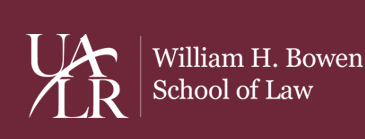
Document Type
Article
Abstract
This sequel to the authors' 2007 article, Fugacious 1, follows the same outline and considers the same topics as the original article while considering the major developments since Fugacious 1 was published. Whereas Fugacious 1 was a basic primer on Arkansas oil and gas law, this article supplements the development of Arkansas oil and gas law over the last five years through an overview of the litigation concerning the Fayetteville Shale Play. Specifically, the article expands on those topics covered by Fugacious 1 needing revision or supplementation, while simply noting as such the sections where no revision or supplementation is necessary.
The authors begin their supplementation by considering the ownership of natural gas found within coal formations and conclude that a coal owner may vent coal-bed methane away from its operations pursuant to safe mining practices while owing nothing to the gas owner for the gas lost as a result thereof. However, the coal owner may not capture and sell the coal-bed methane without the gas owner's permission. Next, the article discusses two recent Arkansas Court of Appeals cases considering reservation language in reservation deeds. The article then discusses the evolution of the Strohacker doctrine in Arkansas, concluding that the area where evidence of knowledge of oil and gas as mineral is relevant is not precisely limited to the county containing the lands.
The authors then consider problems with severing minerals, and Arkansas' Duhig doctrine, a bright line rule of property regarding mineral interests which applies to warranty deeds but not to quit-claim deeds. The authors examine a recent case where their opinion from Fugacious 1, that every purported tax forfeiture of a severed mineral interest for a tax year prior to 1986 was void for failure of the tax assessors in Arkansas's various counties to properly subjoin mineral assessments to surface assessments of the same lands prior to 1985 legislation, which removed the subjoinder requirement, was proven correct. The authors discuss ingress and egress, and a recent Arkansas Supreme Court holding where the Court found that Arkansas Oil and Gas Commission's General Rule B-42 requires express permission to conduct seismic testing despite the tester's ingress and egress right. Regarding oil and gas leases, the authors provide a thorough analysis of the revised Ark. Code Ann. § 15-73-701 and its implications to the oil and gas business.
The authors finish their supplementation with a discussion of implied covenants in leases and the prudent operator standard codified in Ark. Code Ann. § 15-73-701, the Rule of Capture, and the Arkansas Oil and Gas Commission's jurisdiction to interpret contracts. In conclusion, the article notes that as this area of the law continues to develop and generate complex litigation, more issues are sure to sure to arise in the years to come.
Recommended Citation
Thomas A. Daily and W. Christopher Barrier,
Still Fugacious After All These Years: A Sequel to the Basic Primer on Arkansas Oil and Gas Law,
35 U. Ark. Little Rock L. Rev. 357
(2013).
Available at: https://lawrepository.ualr.edu/lawreview/vol35/iss2/4

